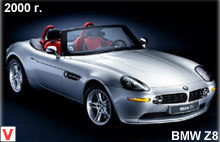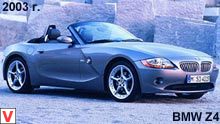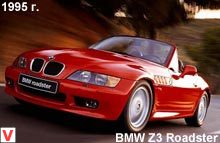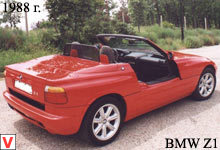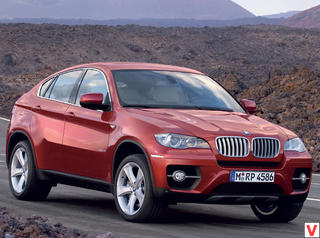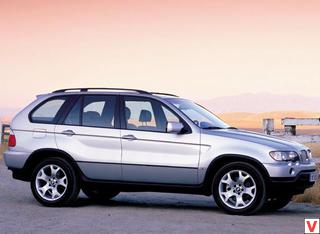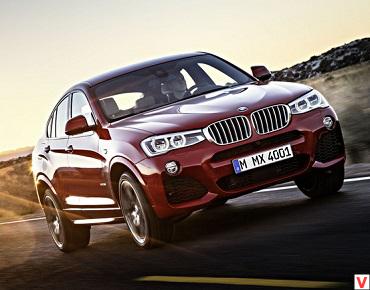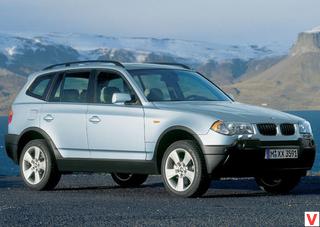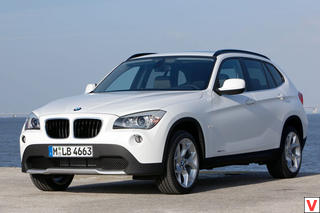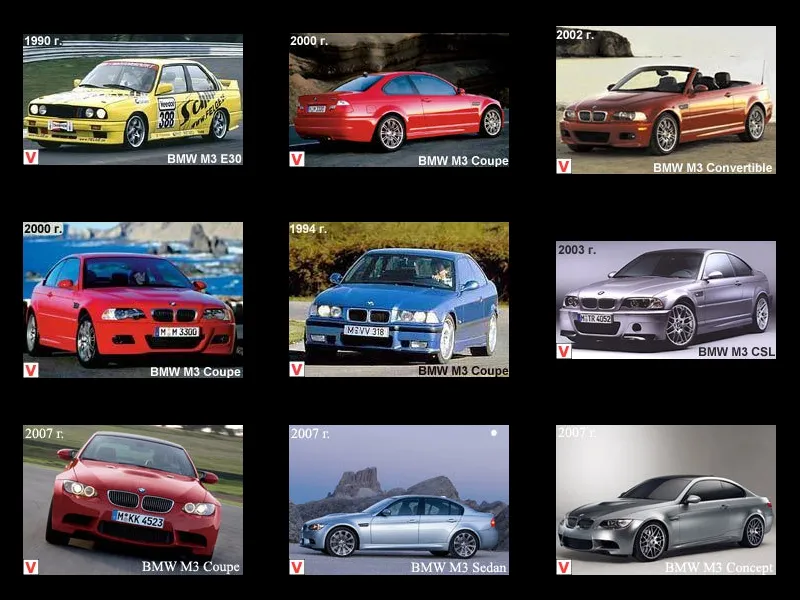
The BMW M3 is a charged version of the BMW 3 Series Sport Coupe. Excellent dynamics and perfected sporty handling combine in this car with a prestigious and recognizable appearance and high reliability. The E30 body was replaced by the previous E21 body of the small third BMW series in 1983. Initially, the E30 was more refined than the E21, rather than a brand new car and used mostly the same engines. The main design changes were the front and rear suspension and cabin ergonomics. However, the company's designers have worked so well on the exterior that the magnificent proportions of the E30 still delight BMW fans, and the style of this car has become considered a classic.
In August 1986, fans of the brand were pleased with the appearance of the M3 model with an injector 200-horsepower 6-cylinder 2.3-liter engine. Although due to the obligatory catalytic converter and due to the increased resistance in the exhaust tract the power actually turned out to be 5 hp. less. Externally, the M3 was distinguished by extended wings with low-profile tires of dimension 205/55 R15 and “developed” bumpers and sills. The value of accelerating dynamics (6.8 s to hundreds) has long become a dividing line, beyond which real sports supercars have already begun.
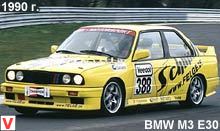
But from the second hand it is worth taking an emku very carefully, for lovers of “spur” for the most part do not differ in accuracy of driving (especially here in Russia). In mid-1987, the body has undergone light cosmetic changes. The grille was slightly lowered, the chrome-plated bumpers were replaced by more fashionable blacks (and later painted in the color of the car), increased the size of the rear lights. Almost all cars after 1987 have power steering and a much softer accelerator pedal. BMW models of the third series in September 1988 were restyled.
On the car began to install new headlights. Upgraded shape of the rear and rear lights. In the vast range of engines, a new injection 100-hp 1.6-liter engine appeared, which did not differ in fuel efficiency or acceleration dynamics.
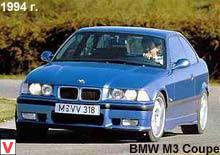
But the stiffer suspension and the tachometer needle, jumping on the half-shells when pressing the accelerator pedal, were made to believe that the "316i" is the brother of the M3, but very small and weak. From the same time, "emku" began to produce in the form of a gig. And only close to the end of the production of E30 Bavarians pleased generalist. True, the luggage compartment could not boast a significant amount but the car looked just great. Another rare modification - the 325iX model with all-wheel drive - borrowed the transmission from the all-wheel drive "five" in the E34 body. Produced and diesel versions of the sedan.
All engines, in addition to mechanical 5-speed gearboxes, were also equipped with 4-range automatic hydromechanical transmissions. Special mention deserves the model 325iS, produced in 1989-90. The car was equipped with special plastic spoilers, bumpers and thresholds, a suspension bracket from the M3 and a sports salon. Of course, the most remarkable car in the 30th body is the M3 division of Motorsport for participation in the FIA GT races.
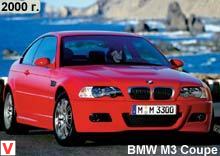
This model has undergone many modifications and had 3 evolutionary versions in order to meet the changing requirements of the FIA. At the same time, the M3 was also widely available. The model was incredibly successful, constantly occupied the top rows of the tables. Paying tribute to the excellent qualities of the E30, it is worth noting that for the M3 Motorsport was forced to make a special suspension, the design is similar to the fifth series (body E28). Initially, the younger E30 models used the old four-cylinder M10 engine, which was installed in 2002 and E21. Then the M10 was discontinued and replaced in 1987 with the M40 with a new injector and more power.
But the real miracle was the appearance in 1989 of a modification of the M40 with the code M42. This engine with two camshafts and 24 valves could compete in power with large M30 engines, squeezing 140 hp. from all the same 1800 cubes and possessing unprecedented dynamism. M42 stayed in production right up to 1996. Most of the older E30 models (320i, 323i, 325i) used the remarkable M20 six-cylinder engine, sharing it with the “fives” of the same years. This includes the economical model 325e with a low-speed 2.7-liter M20 / B27eta.

The rare South African model 333i used the M30 "big six" engine from the 5/6/7 series. Also produced cars with a diesel engine M21 (6 cylinders, 2.4 liters) with and without turbocharging. Production of the M3 E30 coupe was discontinued in 1990 as a result of a change of body of the 3rd series to the E36. M3 - E36 Only in January 1992 were the two-door coupe 320i, 325i and M3 presented, and in September of the same year they were equipped with new engines with controlled valve timing. The M3 was somehow very briskly advertised by dealers in advertising, so it’s best to refrain from buying a model until 1994.
This car with developed rapids and bumpers at times, like the tuning versions, exploited incorrectly. Often, until the engine knocks, it was not shown in the company's service, which is absolutely necessary to do with such cars charged in a sporty manner. By the way, the SMG system was also installed on the M3 (manual 6-speed manual gearbox with hydraulic gear shifting, which made it possible to drive on both the automatic gearbox and manual shift without a clutch pedal). Buying tuning versions of the famous company Alpha generally need to make only in the presence of a highly qualified specialist.
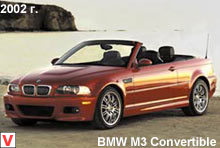
Only he can give an objective assessment of the state and degree of wear of the suspension, engine and gearbox. The convertible of the new model range was replaced by the old model only in March 1993. As an option, it offers a removable aluminum top. M3 - E46 The coupe family is now headed by the generally recognized leader among the cars of this class M3. External differences of the car are in a different front bumper-spoiler with a larger air intake, stylish ventilation grilles on the sidewalls of the front fenders and special chrome-plated alloy wheels.
In the salon there are sports seats, a “three-spoke” steering wheel with an abundance of various functional buttons and fashionable now chrome rims of round dials in the instrument panel. At 45 cc increased engine displacement M3. Forcing allowed to bring the power of this outstanding engine to 343 hp at 7900 rpm The world premiere of the convertible on the troika chassis was held in March 2000 at the Geneva Motor Show. The appearance of a convertible with a coupe is obvious, although the cars have different doors and rear fenders.
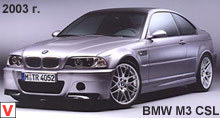
The cabriolet has a safety arch automatically triggered when overturning and a folding soft top, which fits into a special volumetric container and can be dismantled. In the cold season, a hard top is installed, turning the car into a full-fledged coupe. Since August 2000, the BMW M3 in the coupe and convertible versions has been offered with a second-generation Sequential M gearbox (SMG II) sequential gearbox. This is a clutchless manual gearbox, built on the "Formula 1" technology and having an automatic gear shift mode. With the new BMW M3 CSL, the Bavarian company is reviving the traditions of the 70s in the construction of sports cars.
Based on the M3, BMW engineers replaced most of the body elements with lighter aluminum and composites. The most outstanding event in the M3 “diet” program is the roof, which is completely made of carbon. Thanks to all these changes, the car’s weight was reduced by 110 kg to 1. 385 kilograms. The engine's performance was also raised (from standard 343 to 360 hp.), And now for each “horse” under the hood of the car there are 3.85 kilograms of the car. Increased power is achieved by installing an upgraded exhaust system and optimizing valve timing. Overclocking to 100 km / h, the M3 CSL wins three tenths of its M3 “younger sister”.
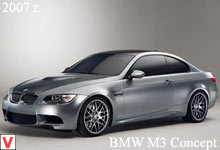
Already after 16.8 seconds, the car reaches a speed of 200 km / h. And the maximum speed is limited to 250 km / h. However, the improvement in dynamic performance was not only a consequence of a decrease in vehicle mass and an increase in engine power,Drivelogic 6-speed gearbox. In addition, in order for the M3 CSL to definitely win the “traffic light races”, they put a Launch-Control system on the car, similar to the one used in Formula 1. Naturally, the brakes were also strengthened. In order to make the car more docile, the track of the car was increased by installing wider 19-inch wheels. The interior is sporting simplicity. No seat heating or navigation system.
Audio and air conditioning are on the list of additional equipment. But the owner of the car will receive luxury sports seats and a lounge, which the Bavarians have tried to give the maximum similarity with a racing car. The official debut of the new generation M3 coupe took place at the Motor Show in Frankfurt in September 2007. The serial model was preceded by a concept, presented at the Geneva Motor Show. The new M3 is based on the coupe of the 3rd series, but it looks more sporty.
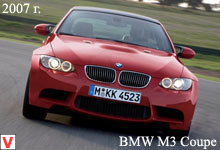
Among the innovations are a front spoiler, chrome air vents behind the front wheel arches, new exterior mirrors and four chrome exhaust pipes. In addition, the model is equipped with new 18-inch wheels and slightly increased in size. The main thing - under the hood now are not six, but eight cylinders! The M3 is equipped with a four-liter eight-cylinder V8 gasoline engine, derived from a 5.0-liter V10, which is used in the M5 model. The engine produces 420 hp at 8,300 rpm, and a maximum torque of 400 Nm. Thanks to the use of the Double Vanos variable valve timing technology, 85 percent of the torque (340 Nm) will be available already from 2000 rpm.
and the moment curve of the new engine has a smooth rise in the range from 2 to 6 thousand revolutions. The engine is aggregated with a six-speed manual gearbox. To the "hundred" such a coupe accelerates in 4.8 seconds, and the maximum speed is electronically limited to 250 kilometers per hour. Externally, the M3 coupe, although it echoes the simple coupe, but it is very different from it. All design elements of the concept shown in Geneva are preserved.
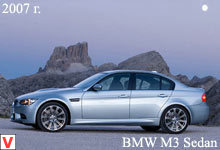
The new “emka” turned out to be daring and full of aggression, which is emphasized by the original front bumper with powerful air intakes, extended wheel arches, tail bumper with a weighty diffuser and a small spoiler on the trunk lid, air gills on the front wings. The picture is completed by a different rubber front and rear - traditionally the rear wheels of the M3 are somewhat wider than the front ones. Following the debut of the BMW M3 coupe, the Bavarian auto concern officially introduced the sports sedan of the same series.
The four-door car with the letter “M” returned to the BMW model range for the first time since 1994. The sedan is designed on the same rear-wheel drive platform as the coupe, but the additional two doors, a roomy trunk, and decent space for rear passengers add to its practicality. At the same time, the weight of the car increased slightly - only up to 1,605 kg. Under the hood is the same 4.0-liter V8 rated at 420 hp, like the two-door version. The dynamics deteriorated slightly. A car from a spot to a hundred accelerates in 4.9 seconds. BMW M3 is also planned to be produced in the coupe-cabriolet version. Expected, that the novelty will receive a three-section metal folding roof.
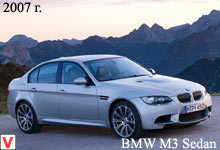
According to preliminary data, with the roof raised, the volume of the open-top luggage compartment will be 350 liters, and when it is removed, 250 liters.
